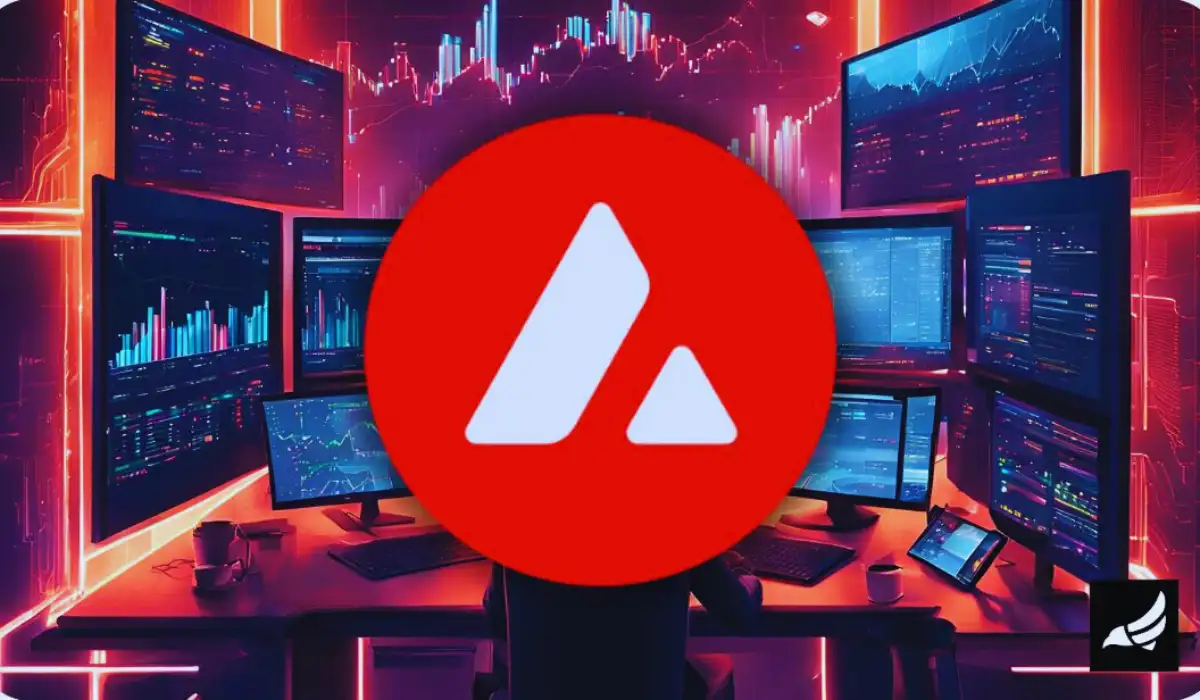Avalanche, or AVAX, is a quick open-source blockchain technology configured for decentralized applications (dApps). Avalanche is also popular among developers for its high performance and low transaction costs, which help them create highly scalable and intuitive applications. Avalanche provides a faster and safer finality through its many consensus methods. As the cryptocurrency industry is growing along with DeFi protocols and NFTs, Avalanche is also becoming a recognizable part of the blockchain industry. Throughout this article, we will explore Avalanches, their pros, cons, and risks, along with how they work.
What is Avalanche (AVAX)?

Avalanche (AVAX) is a platform with a decentralized system that lets users build and initiate interoperable decentralized applications (dApps), financial infrastructure, and blockchain protocols. It was Ava Lab who created the Avalanche in September 2020. It was created optimized for scalability, adaptability, and performance, perfect for the blockchain user’s needs.
History of Avalanche
In September 2020, Ava Labs developed Avalanche (AVAX) with Emin Gün Sirer, Maofan “Ted” Yin, and Kevin Sekniqi as cofounders. It was designed to overcome scalability and interoperability limitations in existing blockchain systems. All the commitment to Avalanche was towards providing a highly scalable and efficient platform for decentralized applications (dApps) and custom-modified blockchains that utilize Avalanche’s consensus. Avalanche also supports the smart contract and works on Ethereum, which will make it easier for the user to migrate between different networks. Now Avalanche is a leading platform in open-source blockchain technology in the cryptocurrency industry.
How does avalanche (AVAX) work?
Avalanche is a blockchain platform developed for decentralized applications and custom blockchain networks. Avalanche has many functions and can be used for different purposes, such as transaction fees, staking, governance, collateral, incentive mechanisms, and custom blockchain creation.
1. Transaction fee structure
AVAX can be used as a token of the Avalanche network. This token can be used to pay instead of the transaction fee. Staking is important for the system’s smooth functioning. There are fees for transaction processing and smart contract execution. You can use AVAX in these scenarios.
2. Staking
Holding AVAX tokens enables stakeholders to participate in network security, transaction validation, and consensus through staking, earning rewards in AVAX tokens. This incentivizes participation, driving network growth and expansion.
3. Governance token
The AVAX token can be used as a governance token, which lets the stakeholders (people who hold the token) get a say in the proposals and vote on protocols and changes in networking. The AVAX token lets you participate in these decision-making processes.
4. Collateral
Many of the decentralized finance applications in the Avalanche ecosystem already utilize the token and accept its valuable collateral. Even the most heavily utilized platforms worldwide have recognized the importance of the AVAX tokens.
5. Incentive mechanism
The avalanche protocol incorporates the incentive mechanism that encourages AVAX holders to stake their tokens, thereby securing the network and earning rewards. By staking, holders enable decentralized node operation, increasing the network’s resilience against attacks as the circulating tokens rise.
6. Custom blockchain creation
AVAX coins provide developers with the flexibility to establish custom subnets and blockchains. Making the process easier and helping developers create specialized networks with their own governance rules and economic models.
Advantages and Disadvantages of Avalanche
Get into the advantages and disadvantages that Avalanche has.
Advantage
- The Avalanche has high-performance transaction processing times, which
- There are incentive mechanisms involved that promote engagement.
- Avalanche’s institutional partnerships enable the tokenization of securities. Commodities and other real-world assets, expanding the possibility of decentralized finance.
- Able to accommodate numerous blockchain projects
Disadvantages
- Close rivalry with networks like Ethereum
- Requires a stake of 2000 AVAX tokens from avalanche validators
- Even careless or conspiring validators are not made to forfeit their AVAX as a penalty.
Avalanche versus Ethereum
At first, Avalanche topped its faster transaction time than it has been able to show for a long time—4500 transactions per second compared to Ethereum’s 14.65 upper limit. But the avalanche network looks yet to reach that speed. During the period of 8th September to 14th September 2024, the network was able to record more than 8.12 million transactions on average, approximately 13.43 transactions a second. 7 for a single day that was the fastest during the week, Avalanche achieved nearly 405 tps, many more than what the Ethereum network managed to get.
What is said to be the reason why Avalanche network transaction validation speeds are much faster than Ethereum’s is also the fact that Avalanche has a parallel consensus protocol. Although it is true Ethereum has a greater market presence with more projects and transactions operational, the surviving scale provided by Avalanche may soon prove beneficial given Ethereum platforms possess a unique fee scale but charges on both blockchains depending on the activity or busy nature of the network. However, the fee structures are decided by the user governance in the avalanche platform, whereas in Ethereum’s fees are decided by the demand for the service and the amount of supply.
Conclusion
Avalanche is a blockchain platform that can be used for quick and daily transactions with a scalable design and a flexible framework. It helps you solve technical difficulties experienced by other blockchains through its innovative consensus mechanism and consensus mechanism. The avalanche was built to support the decentralized applications. Avalanche can be a good investment option, but the factors for you to consider before investing are your risk tolerance and financial goals and whether they align with what Avalanche could provide.

